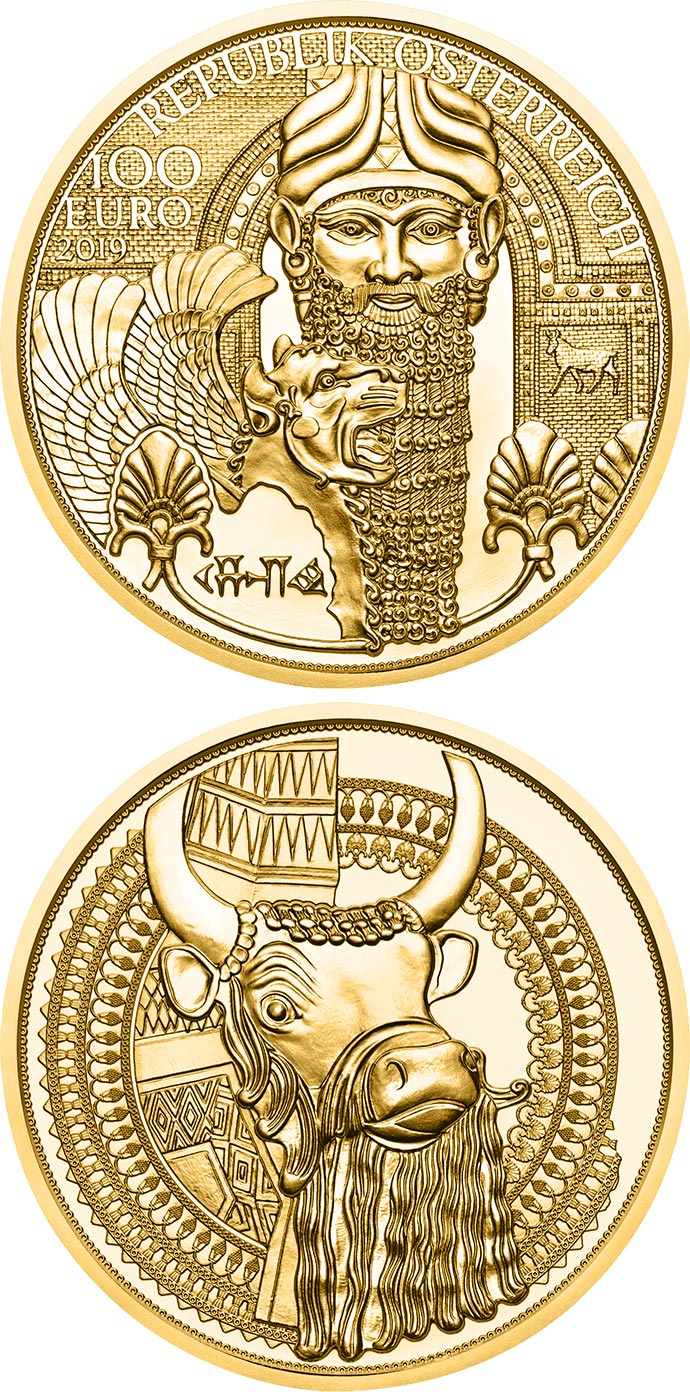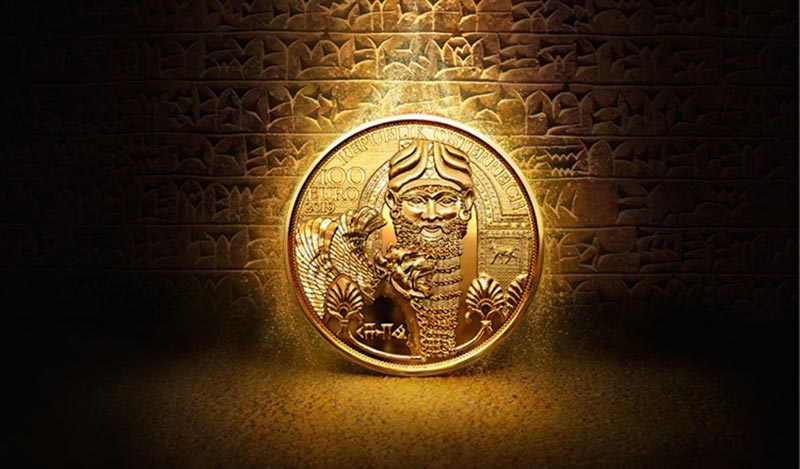100 euro - The Gold of Mesopotamia
Series: Austria - The Magic of Gold

No other metal has as much symbolic meaning as gold. The five-piece 100 euro Magic of Gold series traces that meaning through different ancient cultures. The first of those cultures is Mesopotamia, ‘the land between two rivers’, the Tigris and the Euphrates, where some of the most important developments in early human history occurred.
The Gold of Mesopotamia coin features a portrait of the legendary ruler King Nebuchadnezzar II (circa 640-562 BC) wearing a horned crown. According to the Book of Daniel in the Old Testament, Nebuchadnezzar erected a huge golden statue and made his subjects worship it on bended knee. As elsewhere, in Mesopotamia the ownership of gold was associated with high standing. It was reserved for the powerful and all gold had to be handed over to the ruling class and the religious authorities. Mesopotamian gold was mainly sourced from Egypt, where it was believed that the streets were paved with the precious metal.
The other side of the coin shows a bull’s head from a Detail found on the Golden Lyre of Ur, which was discovered in 1929 in the Royal Cemetery of Ur, located in present day Iraq. Created roughly 4,500 years ago, the lyre is considered to be one of the world’s oldest surviving stringer instruments. All six coins in the Magic of Gold series feature ancient art treasures and the word ‘gold’ is written on each of them in the respective script of the culture they explore.
